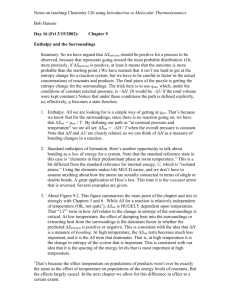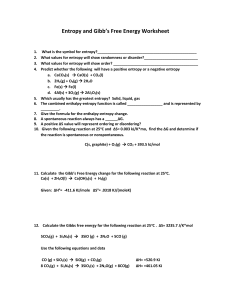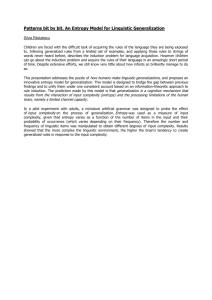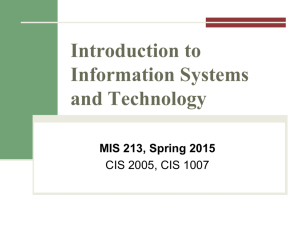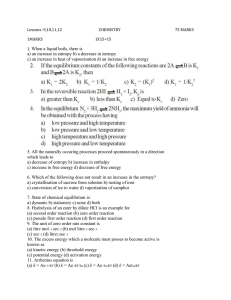day13 - St. Olaf College
advertisement
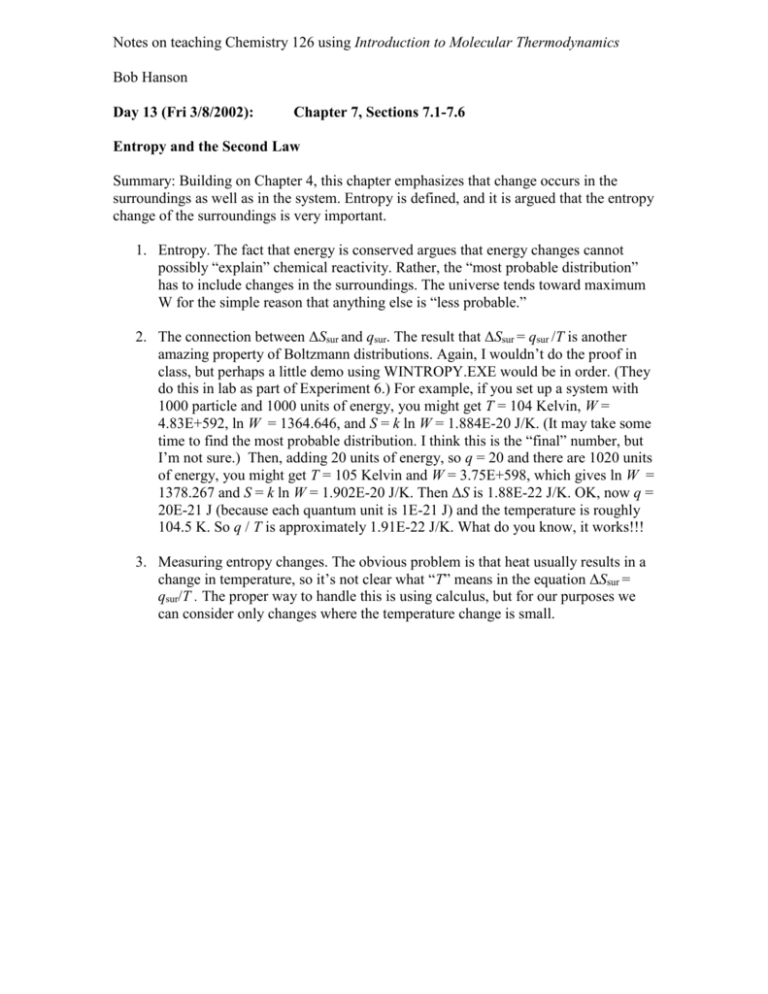
Notes on teaching Chemistry 126 using Introduction to Molecular Thermodynamics Bob Hanson Day 13 (Fri 3/8/2002): Chapter 7, Sections 7.1-7.6 Entropy and the Second Law Summary: Building on Chapter 4, this chapter emphasizes that change occurs in the surroundings as well as in the system. Entropy is defined, and it is argued that the entropy change of the surroundings is very important. 1. Entropy. The fact that energy is conserved argues that energy changes cannot possibly “explain” chemical reactivity. Rather, the “most probable distribution” has to include changes in the surroundings. The universe tends toward maximum W for the simple reason that anything else is “less probable.” 2. The connection between ΔSsur and qsur. The result that ΔSsur = qsur /T is another amazing property of Boltzmann distributions. Again, I wouldn’t do the proof in class, but perhaps a little demo using WINTROPY.EXE would be in order. (They do this in lab as part of Experiment 6.) For example, if you set up a system with 1000 particle and 1000 units of energy, you might get T = 104 Kelvin, W = 4.83E+592, ln W = 1364.646, and S = k ln W = 1.884E-20 J/K. (It may take some time to find the most probable distribution. I think this is the “final” number, but I’m not sure.) Then, adding 20 units of energy, so q = 20 and there are 1020 units of energy, you might get T = 105 Kelvin and W = 3.75E+598, which gives ln W = 1378.267 and S = k ln W = 1.902E-20 J/K. Then ΔS is 1.88E-22 J/K. OK, now q = 20E-21 J (because each quantum unit is 1E-21 J) and the temperature is roughly 104.5 K. So q / T is approximately 1.91E-22 J/K. What do you know, it works!!! 3. Measuring entropy changes. The obvious problem is that heat usually results in a change in temperature, so it’s not clear what “T” means in the equation ΔSsur = qsur/T . The proper way to handle this is using calculus, but for our purposes we can consider only changes where the temperature change is small.
